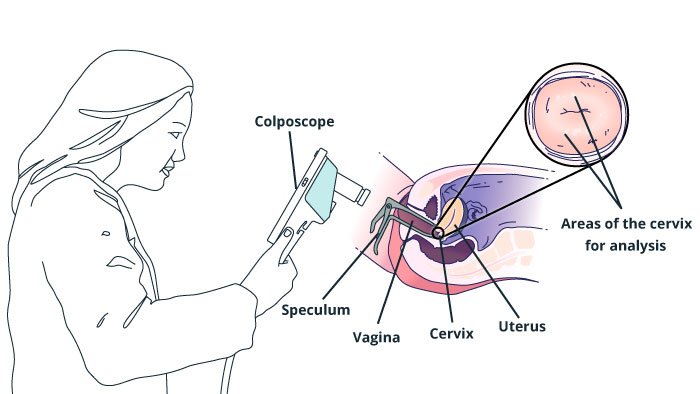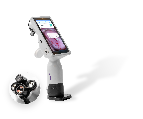
Patient education and understanding of medical procedures plays an essential role in improving the patient experience. But as clinicians, we cannot control the multitude of sources patients use. So when patients have read incorrect or questionable information, how do we set them straight?
Patients search online for medical information first
The data backs what most clinicians have already observed. Millions of people rely on search engines to answer their health concerns. Internet users conduct an estimated 6.75 million health-related searches on Google each day representing 4.5% of all searches. It makes sense. Most people turn to the internet to find information, despite the fact that the internet has become renowned for ‘fake-news’ and dubious sources. Nevertheless, 8 in 10 people seeking health information online start with a search engine. This means a high likelihood that patients will use the internet before referring to a doctor for clarification.
The internet contains an estimated 100,000 health-related websites. Medical and health-related websites run the gamut from reputable sites written and fact-checked by clinicians, through to ‘anti-vax’ propaganda espousing opinions that are harmful to health. Although having such vast resources has its advantages (aside from an awful lot of pictures), it can become problematic.
Patients rarely fact-check
More reputable medical websites frequently offer links to credible academic research or other authoritative sources to support their claims. However, few patients check these sources. A Pew Research Center survey found that 15% of patients who searched online for health information actually took the time to check the source and publication date of the information they found online.
Even patients who take the time to fact-check face barriers in accessing authoritative medical information. Theoretically, any internet user can access academic research. However, many studies lie behind paywalls, and the average non-expert won’t usually pay to read the research necessary to back up health claims on the internet. Even those in the medical world must pay high prices for the journal subscriptions., although the University of California is pushing back against high subscription rates.
Patient literacy improves misinformation
Literacy levels play a significant factor in health outcomes. Many patients with lower levels of education and understanding of the medical system and terminology have difficulty in accessing the services and treatment they require as they lack the ability to successfully negotiate the medical system.
One study assessed the readability of reputable and reliable medical websites, showing that most require a reading level of high school level or above. This disenfranchises many patients from getting the understanding they need to properly inform themselves about their healthcare.

Patient misinformation can be counteracted
The medical community cannot possibly counteract the force of the internet. Inevitably, patients will use it as a primary source of information. It is possible for clinicians to preempt this behavior and offer patients suitable forms of information. Understanding that patients will inevitably turn to the internet as a source of information can help clinicians work with patients to get them the right information.
Some colposcopy physicians direct their patients to authoritative websites such as the ASCCP. Dr. Bruce Kahn, a practicing OBGYN specializing in urogynecology at Scripps Health, suggests this as a prime source of additional information for his patients although he notes that his patients are well-educated and internet savvy and generally understand the content.
Counteracting patient misinformation with accessible online content
Some larger providers have started creating their own sources of patient information. The Mayo Clinic website, a well-known resource for medical information, appears frequently in internet searches and provides scientifically backed explanations. Planned Parenthood invests significantly in various online campaigns to promote health awareness. They also created a website that uses interactive features, simple language and clear diagrams to help patients across the education spectrum receive the information they require.
The area of colposcopy, in particular, has limited options for further information. In most high resource settings, support groups cater to women who need colposcopy or who have been diagnosed with cervical cancer. However, many of these primarily provide psychological support rather than medical information. Jo’s Cervical Cancer Trust in the UK fills both roles with a robust online forum, one to one counseling, and a range of pamphlets and online information, including videos to explain the procedures. However, this information is geared towards the British population and might not suit all patients.
New colposcopy patient education website
MobileODT is committed to patient education. The EVA System digital colposcope has been embraced by clinicians around the world as a tool to increase patient education and understanding as it allows providers to show patients their cervix on the screen of the EVA device at the point of care.
Taking our commitment to patient education one step further, we have created a comprehensive online guide to colposcopy for patient education. The dedicated webpage gives patients a thorough understanding of the colposcopy procedure; why it is necessary, what will happen during the procedure, and what they need to do/not do afterward.
Learn More: Colposcopy Explained: What it is, what to expect and how to prepare
The pamphlet informs patients of the risks of not completing screening but stresses the minimal statistical likelihood that a colposcopy patient will have cervical cancer. Importantly, the page provides links to cervical cancer support groups around the world to help patients receive peer support during the process.

Clinicians can provide the details of the patient education website to patients as they schedule their colposcopy or as soon as they notify them that colposcopy is required. This will help ensure that they will access a reliable source first. . Of course, no website will ever replace face to face interaction with their clinician, but it can back up the individual counseling with a provider and answer questions the patient might have after the fact.
For clinicians who prefer the ‘old school’ method, or simply prefer to offer patients multiple sources of information, the MobileODT website also includes a downloadable colposcopy fact sheet with diagrams. Simply download and print to share with your patients.







